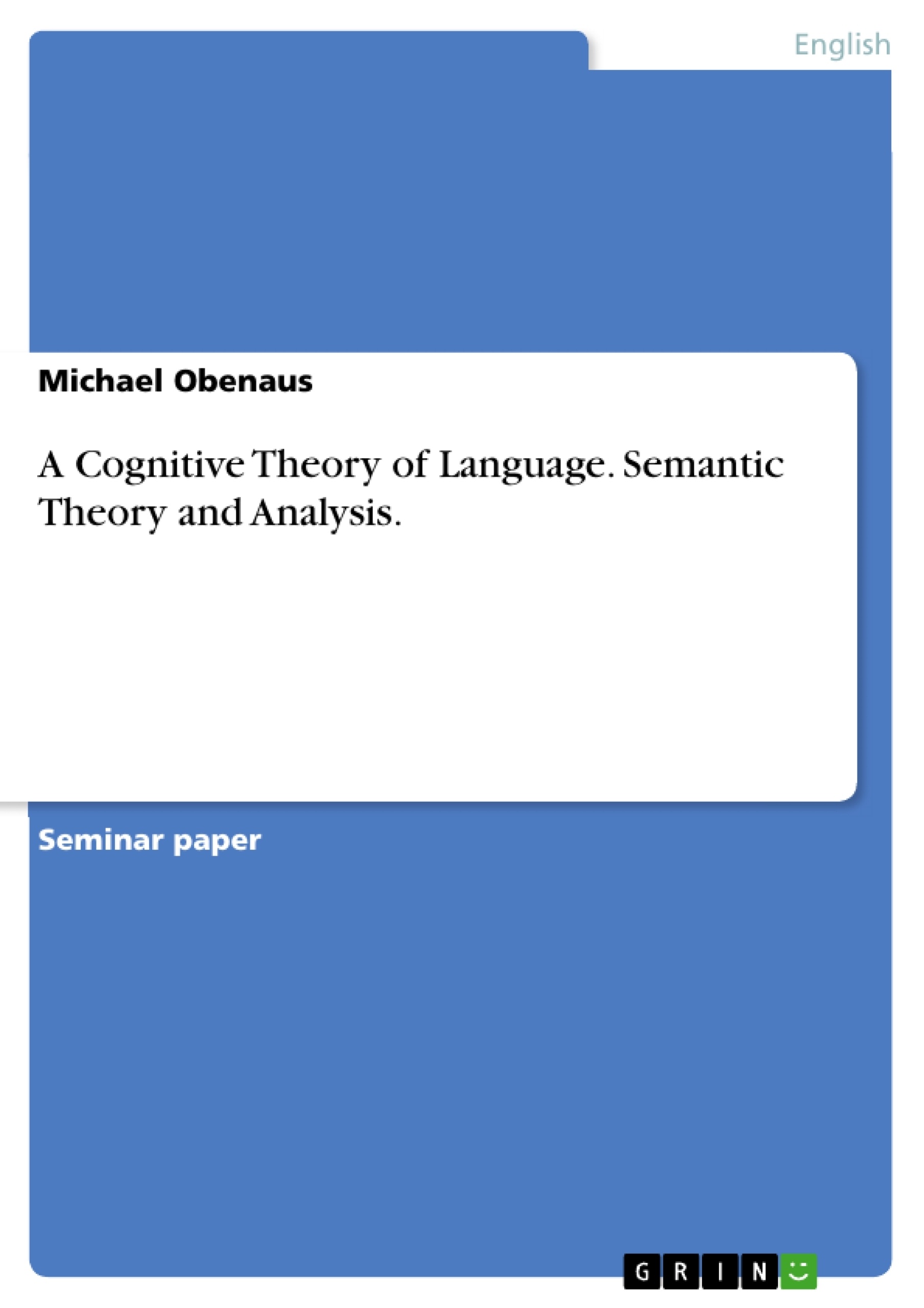”Classical” approaches to categorisation, as called by Taylor (1989, 21 ff.) and Lakoff (1987, 6 ff.), can be characterised by an understanding of linguistic categories as clearly bounded sets of members which have certain essential features in common. These categories are taken to reflect existing categories in the world which are defined by, as Aristotle called it, necessary and sufficient features. These features are binary, i.e. they determine or rule out membership and thereby establish clear boundaries. This understanding of categorisation is manifested in traditional philosophical and scientific thought as well as in ”common sense” theories about language and the world. Lakoff calls this approach ”objectivism” and identifies the following assumptions: ‘OBJECTIVIST METAPHYSICS: All of reality consists of entities, which have fixed properties and relations holding among them at any instant. [...] OBJECTIVIST ESSENTIALISM: Among the properties that things have, some are essential; that is, they are those properties that make a thing what it is, and without which it would not be that kind of thing. Other properties are accidental - that is, they are properties that things happen to have, not properties that capture the essence of the thing. [...] THE DOCTRINE OF OBJECTIVE CATEGORIES: The entities in the world form objectively existing categories based on their shared objective properties.’ (Lakoff 1987, 158-161; emphasis in the original)
Cognitive scientists have set out to prove these assumptions wrong. Categorisation, in their view, is an operation of human cognition which is determined by experiences of physiological and physical characteristics of the human body and bodily interactions with the environment. Categorisations and their realisations, however, can provide the basis for human experience once they are firmly established, so that conceptual categories can work back upon human perception. Language categories, they maintain, are reflections of conceptual categories. Thus, they disclaim the autonomy of language which is presupposed by most formalist and generative linguistic theories (cf. Lakoff 1987, ch. 9), as well as a metaphysical notion of reality which is reflected in human perception and categorisation. Rather, reality is made meaning of through these cognitive processes, which in turn are predominantly structured by bodily experiences and interactions.
Table of Contents
- Introduction
- PART ONE
- Linguistic Categorisation
- John R. Taylor: Prototype Theory and Basic Level Terms
- George Lakoff: Radial Categories, Metonymic Models
- Lakoff's (et al.) Cognitive Theory of Language
- ICM: Image-Schema, Metonymy and Metaphor
- PART TWO
- Case Study
- Analysis
- The Semantics of Metaphor
Objectives and Key Themes
This paper examines cognitive-linguistic approaches to semantics and their application to semantic analysis. The work focuses on the cognitive theory of language and how it challenges traditional objectivist views of meaning. It explores the role of prototype theory and basic level terms in linguistic categorisation, as well as the significance of radial categories and metonymic models. Additionally, it examines how Lakoff's theory of Conceptual Metaphoricity can be applied to the analysis of poetic text.
- Cognitive-linguistic approaches to semantics
- Prototype theory and basic level terms
- Radial categories and metonymic models
- Conceptual Metaphoricity
- Analysis of poetic text
Chapter Summaries
The first part of the paper reviews and discusses semantic theory. It introduces the concept of linguistic categorisation and contrasts traditional “objectivist” views with the insights of cognitive scientists. Prototype theory is presented as a departure from classical approaches, highlighting the notion of fuzzy boundaries, varying degrees of typicality, and the importance of prototypical examples. The chapter further explores basic level terms and their role in efficient categorisation.
Lakoff's concept of radial categories is introduced as a means to understand how categories are built through associative links. This chapter also examines the role of metonymic models in shaping category membership.
Lakoff's (et al.) Cognitive Theory of Language is presented in detail, emphasizing the embodied nature of cognition and the interconnectedness of language and experience. The underlying principles of conceptualisation, including image-schema, metonymy, and metaphor, are discussed.
Keywords
This paper focuses on cognitive linguistics, semantics, linguistic categorisation, prototype theory, basic level terms, radial categories, metonymic models, Conceptual Metaphoricity, cognitive models, and poetic analysis.
- Quote paper
- Michael Obenaus (Author), 2000, A Cognitive Theory of Language. Semantic Theory and Analysis., Munich, GRIN Verlag, https://www.hausarbeiten.de/document/23526


